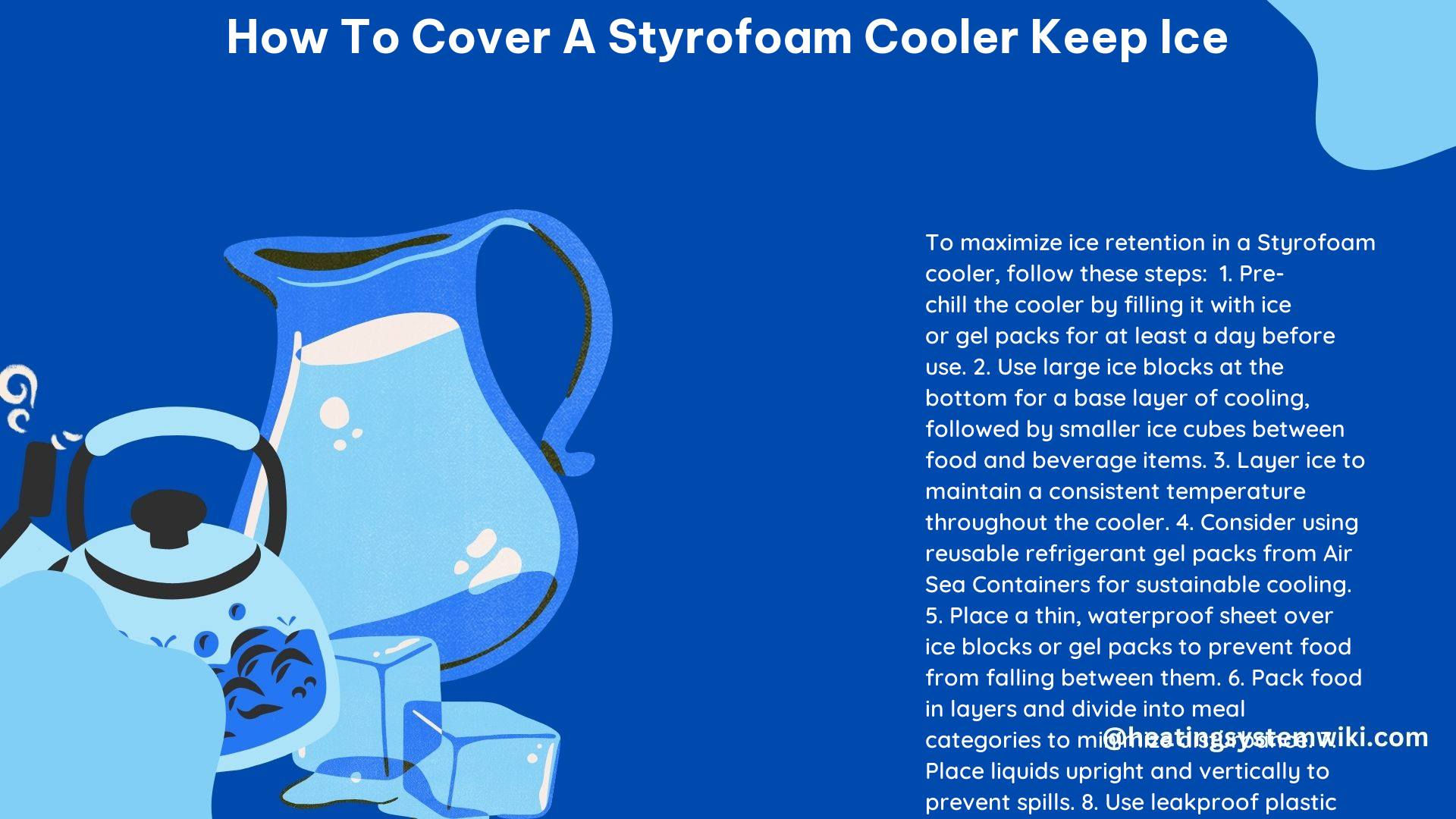Keeping your food and drinks cold while on the go is essential, and a styrofoam cooler can be a budget-friendly solution. However, effectively covering and insulating a styrofoam cooler is crucial to maintaining the ice’s longevity. In this comprehensive guide, we’ll dive deep into the technical details and provide a step-by-step playbook to help you master the art of keeping your styrofoam cooler ice-cold for extended periods.
Understand the Science Behind Styrofoam Coolers
Styrofoam, also known as expanded polystyrene (EPS), is a highly effective thermal insulator. It works by trapping air pockets within its cellular structure, which slows down the transfer of heat. However, it’s important to note that styrofoam is not a magical material that can prevent heat transfer indefinitely. Over time, the heat will gradually seep in, causing the ice to melt.
The cooler itself doesn’t do much cooling; it’s primarily an insulator. To maintain the cold temperature, you’ll need to rely on the cooling power of ice or alternative cooling materials.
Utilize a Lid Barrier for Maximum Insulation

One of the most effective ways to cover a styrofoam cooler and keep ice from melting is to use a lid barrier. This barrier, such as reflectix or a foam camping pad, helps insulate the ice and food from the warmer dead air above it. The lid barrier is particularly useful when the ice begins to melt, as it can help slow down the heat transfer and maintain the cooler’s internal temperature.
When selecting a lid barrier, consider the following specifications:
- Reflectix: A highly reflective, multi-layered insulation material that can effectively block radiant heat transfer. It has an R-value of around 3.5 per inch.
- Foam Camping Pad: A closed-cell foam pad with an R-value of around 2 per inch. It’s a more budget-friendly option compared to reflectix.
Protect the Cooler from Sun and Heat
Exposure to direct sunlight and heat can significantly accelerate the melting of ice in your styrofoam cooler. To mitigate this, always keep your cooler covered, whether it’s in your vehicle or at the campground. Use a blanket, pillow, or reflectix to shield the cooler from the sun’s rays.
If possible, store the cooler in an air-conditioned environment, such as the interior of your vehicle, rather than on a hot surface like a metal picnic table. This can help maintain the cooler’s internal temperature and prevent the ice from melting too quickly.
Pack Food and Beverages Strategically
Proper packing techniques can also contribute to the longevity of the ice in your styrofoam cooler. Consider the following strategies:
-
Layering: Pack food and beverages in layers, with the most frequently accessed items on top. This helps minimize the number of times you need to open the cooler, reducing the influx of warm air.
-
Meal Categorization: Divide your food and beverages into meal categories, such as breakfast, lunch, and dinner. This organization can help you avoid disturbing the entire contents of the cooler when accessing specific items.
-
Ice Placement: Place large ice blocks at the bottom of the cooler to provide a base layer of cooling. Then, fill the gaps between the ice blocks and food/beverage items with smaller ice cubes. Layering the ice helps maintain a consistent cool temperature throughout the cooler.
Utilize Reusable Refrigerant Gel Packs
While traditional ice is a reliable cooling source, reusable refrigerant gel packs can be a more convenient and effective alternative. These gel packs, such as those offered by Air Sea Containers, are completely non-toxic and safe to handle. They can be frozen and reused multiple times, providing a consistent cooling solution without the mess of melting ice.
When using gel packs, consider the following specifications:
- Cooling Capacity: Gel packs typically have a cooling capacity of around 32°F to 40°F, depending on the brand and model.
- Reusability: High-quality gel packs can be reused dozens of times, making them a cost-effective and environmentally-friendly choice.
- Combination with Ice: Gel packs can be combined with ice to create an all-around cooling solution, further enhancing the longevity of the ice.
Pre-Chill the Cooler for Maximum Efficiency
To get the most out of your styrofoam cooler, it’s essential to pre-chill it before your trip. At least a day before your outing, bring the cooler to a cool, temperature-controlled space and fill it with several bags of ice or reusable freezer gel packs. This will help bring the core temperature of the cooler down, allowing the ice to last longer once you’ve packed your food and beverages.
By following these comprehensive steps, you can effectively cover a styrofoam cooler and keep ice for an extended period, ensuring your food and drinks stay fresh and cold throughout your adventures.
